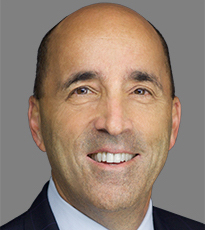The global pandemic has been both a wake-up call and, for many, a short-term band-aid for institutions of higher learning. On one hand, COVID-19 is forcing educational leaders to finally address the real possibility of near-term financial failure. On the other hand, the U.S. government provided billions of dollars through the CARES Act—a welcome relief in an unprecedented time—but it only provided a short-term reprieve from unsustainable operations.

Going forward, the pandemic will force leaders in higher education to do what they’ve been reluctant to do: rethink and reboot their models to invest in areas that generate long-term success for their institutions.
It’s simply not enough to apply unilateral cuts at the university level, especially as traditional government funding has declined and will continue to decline as states grapple with greater COVID-19 related budget challenges. It’s time to develop new strategies to achieve a sustainable future.
Higher ed institutions must do several things to survive now and build for the long term:
- Manage cash like its life depends on it—because it does. Job one for schools is to immediately manage liquidity. Schools must understand with precision their sources and uses of funds and implement cash forecasting on a rolling 13-week basis. To forecast accurately, the model must be tuned to account for many variables, but the hard work will pay off in better predictability that can lead to more effective decision-making to drive the timing and enhanced scope of options. If you think simply cutting X percent across the university will solve the cash flow problem, it’s only kicking the can down the road. You must dig deeper to reallocate future cash flows on a more strategic basis.
- Reevaluate your school’s biggest areas of strength and weakness—and act. What do students want in higher education today, and what are they willing to pay for it? Perhaps some of your programs lose money. If so, are they the best products you can offer in the post-COVID-19 marketplace? Every school has its own strengths and weaknesses, and now is the time to determine where to hit the accelerator and where to hit the brakes. Schools known for a few highly regarded programs should consider ways to invest more in those areas and less in programs with less demand. It may mean reducing or potentially eliminating certain programs. For others, it may mean expanding or consolidating programs to attract more prospective applicants. It will be hard decisions like these that will bring colleges a step closer to sustainability.
- Reengineer your academic, financial and operational models—these actions make up your long-term survival roadmap. Every stressed university—and small colleges, especially—must meticulously reevaluate its strengths, weaknesses, opportunities, risks and even mission, to survive long term. That means evaluating the core values that make each school stand out, determining ways to enhance those areas and establishing a plan that envisions what the school can be in five or more years. Leaders must examine all areas of the university, which may mean selling underutilized non-core assets or halting other non-core initiatives and activities. With COVID-19, parents and students more than ever are reevaluating the benefits of a college education and institutions simply cannot justify the costs. Near-term discounts are only a short-term solution. Long term, the model must change.
- Speak with one voice to communicate value—and that means all stakeholders. Higher education has traditionally operated in siloes, which effectively complicates campus-wide reforms. With so many stakeholders—from the board to the administration, provost and faculty, to the student body—change happens slowly. But for many colleges on the brink of insolvency, the luxury of university-wide consensus must be sacrificed for survival. That requires visionary leadership, but it also necessitates a plan that allows all parties to participate in the process. If schools can achieve such a feat, that’s a big win. But the battle’s not over. The new plan must be communicated back to stakeholders and to prospective applicants for change to gain traction.
COVID-19 will force higher ed leaders to make difficult decisions, but the future of their schools will depend on these key turning points. Ultimately, leaders must be willing to make the most arduous decisions to best realign the business model and to reallocate the resources into areas of growth and sustainability. Schools that take such bold steps will find themselves on the other side of the pandemic with a vision that provides a new, stronger product to market to their community, prospective students and financial partners.
Robert Hershan, managing director of restructuring and turnaround for Alvarez & Marsal, has more than 30 years of commercial and legal experience and deep expertise in managing complex transactions. In the higher education sector, he led the firm’s engagement with a major university in New York City, developing and implementing financial, operational and restructuring strategies across several campuses. He can be reached at [email protected].
[click_to_tweet tweet=”Op-ed: ‘If you think simply cutting X percent across the university will solve the cash flow problem, it’s only kicking the can down the road. You must dig deeper to reallocate future cash flows on a more strategic basis.’ #highered” quote=”Op-ed: ‘If you think simply cutting X percent across the university will solve the cash flow problem, it’s only kicking the can down the road. You must dig deeper to reallocate future cash flows on a more strategic basis.’ #highered”]







